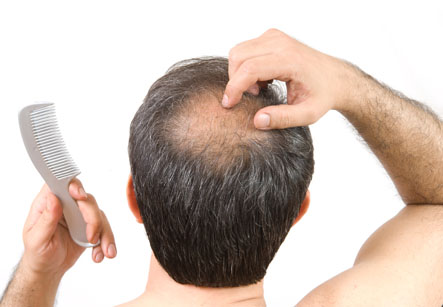Alopecia
Introduction
Alopecia is the term used for the loss of hair. Hair loss can be caused by various reasons, including damage to the hair shaft or follicles. Fungal infections can also commonly cause hair loss.
There are two main types of alopecia. When the immune system of the body mistakenly attacks hair follicles and causes hair loss, it is called as alopecia areata. Hair can fall out in patches all over the body. Androgenetic alopecia is a type of hair loss which is inherited. Hair on the head thins and falls out. In men, this is called as male pattern hair loss. In women, it is called as female diffuse hair loss.
About 60% of people with androgenetic alopecia are men. Hair loss caused by androgenetic alopecia is permanent and there is no regrowth.
We have all the information you need about public and private Cosmetic / Plastic clinics that provide Hair Loss Treatment in Iran, Islamic Republic Of with the best quality and lowest possible price

Signs and Symptoms:
Symptoms of alopecia may include:
• Male pattern hair loss: Thinning out or complete loss of hair at the hairline and top of the head.
• Female diffuse hair loss: A gradual thinning of hair, especially on the top of the head. The hairline usually remains the same.
• Alopecia areata: there are one or more oval bald patches, broken hairs, or easily removable hairs.
Causes may include:
• Aging
• Illness
• Genetics
• Some medications, such as chemotherapy
• Autoimmune disorder, in the case of alopecia areata
• Malnutrition
Diagnosis:
The doctor, usually a skin specialist, can diagnose androgenetic alopecia by physical examination and taking a medical history. If the health care provider suspects alopecia areata, a fluorescent antinuclear antibody (FNA) test may be ordered, which can help to determine whether there is a problem with the immune system.
Treatment Options:
Treatment of loss of hair depends on the type of alopecia. In temporary forms of alopecia, hair will grow back normally without treatment. For people with alopecia areata, medications may help to reduce hair loss. Some men with male pattern hair loss may even consider surgery, such as hair transplants, scalp reduction, and strip or flap grafts.
Drug Therapies
For hair loss:
For male pattern hair loss:
• Minoxidil
• Finasteride- Some men using this drug may have a decreased sex drive or trouble getting an erection.
• In the case of both medications, as the patient stops taking the drug hair will fall out again. If patient uses these medications, the health care provider should monitor for side effects.
For female diffuse hair loss:
• Minoxidil. It must be used indefinitely to keep regrown hair.
For alopecia areata:
• Corticosteroids –these are usually given by injection in the scalp at monthly intervals. In severe cases, corticosteroids may be taken orally.
• Surgical and Other Procedures
• Surgical options include hair transplants, scalp reduction, and strip or flap grafts.
Alternative Therapies
• These therapies have slight success in treating male pattern baldness.
• Nutrition and Supplements
For alopecia areata
Biotin and trace minerals, which are found in blue-green algae, may promote hair growth. Biotin and zinc aspartate may be used to treat alopecia areata in children. However, there is no evidence that biotin will help if there is already enough biotin in the diet. Biotin is found in chard, romaine lettuce, carrots, and tomatoes.
For androgenetic alopecia
Beta-sitosterol and saw palmetto are considered to help hair growth in men with male pattern hair loss. If you are taking other medications, particularly hormone therapy, this should be discussed with the doctor before taking this combination. Saw palmetto may increase the risk of bleeding, especially if the patient is taking blood-thinners such as clopidogrel, warfarin, or aspirin.
Herbs
The use of herbs is an ancient approach for strengthening the body and treating disease. Herbs, however, can trigger side effects and can interact with other herbs, supplements, or medications. Therefore, patient should take herbs only under the supervision of a health care provider.
For androgenetic alopecia
Saw palmetto and beta -sitosterol.
For alopecia areata
Aromatherapy – it has been found that massaging the scalp with a combination of several essential oils improves hair growth. The oils that can be used are lavender, rosemary, thyme, and cedarwood. As the essential oils can be toxic, they are mixed with another oil such as jojoba or grapeseed oil before putting it on the skin. 3 – 6 drops of essential oil are added to 1 tablespoon of jojoba or grapeseed oil and massaged into scalp daily.
Massage
Therapeutic massage increases circulation to the scalp and also reduces stress. Scalp massage using essential oils of rosemary, lavender, thyme, and cedarwood can be beneficial.